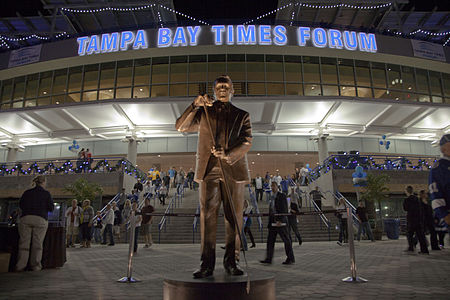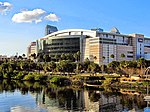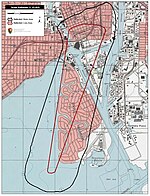Phil Esposito Statue
2011 establishments in FloridaStatues in FloridaTampa Bay Lightning

The Phil Esposito Statue is a commemorative bronze work created in honor of NHL Hall-of-Famer, Phil Esposito, for his role in co-founding the Tampa Bay Lightning franchise. It was unveiled on December 31, 2011, at the Amalie Arena in Tampa, FL.The statue portrays Esposito dressed in a business suit, allegedly at his request, because he came into co-founding the Tampa Bay Lightning as a business man, and not a player (Stuart, 2012). Esposito holds a hockey stick, adorns each hand with his two Stanley Cup rings, and wears a tie with the Tampa Bay Lightning logo.
Excerpt from the Wikipedia article Phil Esposito Statue (License: CC BY-SA 3.0, Authors, Images).Phil Esposito Statue
Thunder Alley, Tampa Harbour Island
Geographical coordinates (GPS) Address Nearby Places Show on map
Geographical coordinates (GPS)
| Latitude | Longitude |
|---|---|
| N 27.942722222222 ° | E -82.45275 ° |
Address
Thunder Alley
Thunder Alley
Tampa, Harbour Island
Florida, United States
Open on Google Maps








